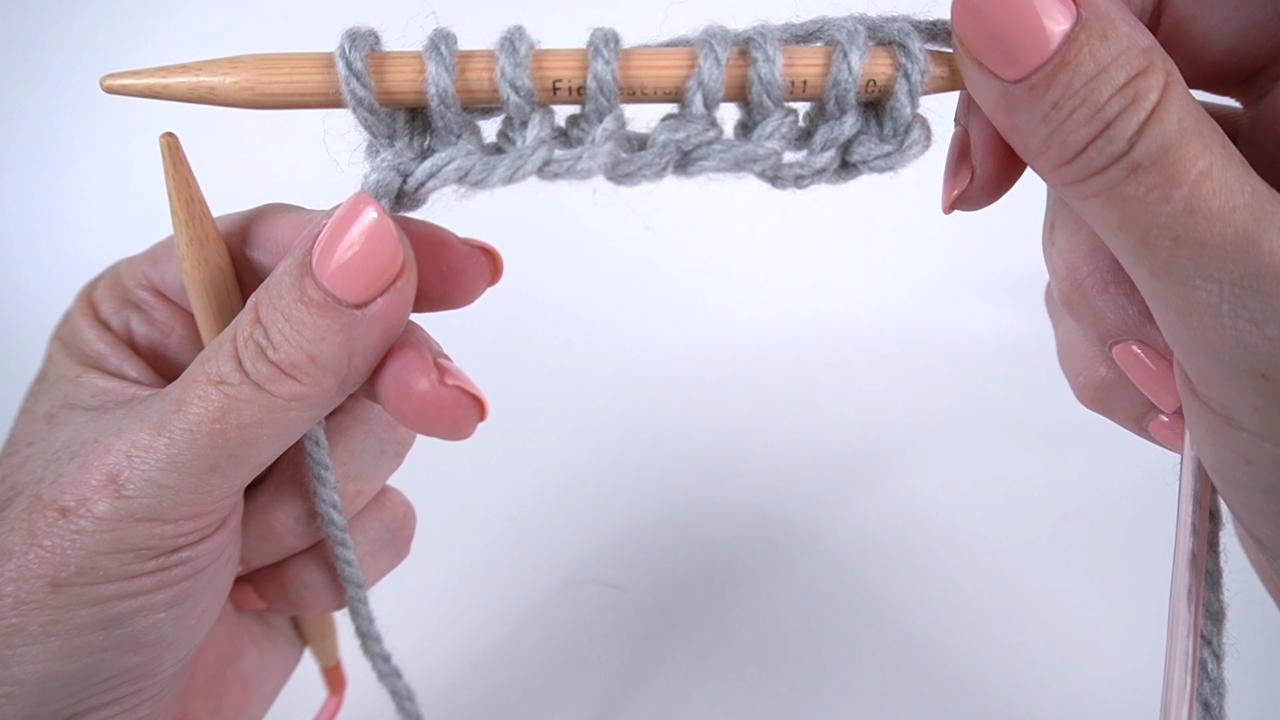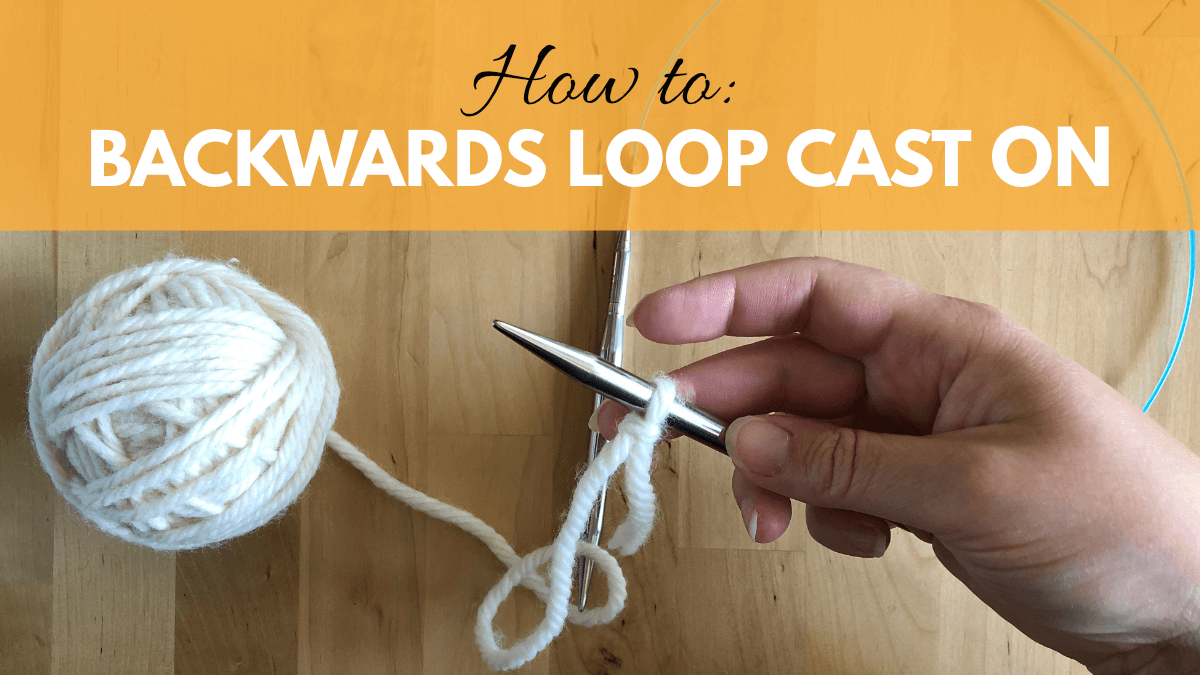Knitting Backwards Loop Cast On
Knitting Backwards Loop Cast On - Remove finger and pull yarn gently to snug loop around needle. Web a backward loop cast on is often used when you want to add stitches to your knitting in the middle of a row. Web in fact, it’s the first technique i learned as a knitting beginner! Leaving a 10 inch tail at the end of the yarn, place a slipknot on one of your needles. Stitches have been cast on! It is ideal, however, for casting on stitches in the middle of a work (as is often done for buttonholes, neck openings on sweaters, etc). It forms a loose cast on. The backwards loop method is the easiest method of casting on, but the edge might not be suitable for all projects. Web how to cast on stitches for your knitting project using the simplest method possible, the backwards loop cast on, sometimes known as the 'thumb method' or 'thumb loop cast on'. This is useful for where you need to join between two live sets of stitches. It is especially useful when you need to add stitches at the end of a row or in the middle of your work. Web the backwards loop cast on is the quickest and easiest cast on method. This cast on is common for beginners or when casting on underarm stitches for sweaters. Remove finger and pull yarn gently to snug. Web the backward loop cast on is perfect for buttonholes, thumb gussets or any time stitches must be cast on within a garment. Web how to cast on stitches for your knitting project using the simplest method possible, the backwards loop cast on, sometimes known as the 'thumb method' or 'thumb loop cast on'. In this tutorial, we share both. Take the yarn from the skein and wrap it around your thumb, securing the end in your hand with your other fingers. It is especially useful when you need to add stitches at the end of a row or in the middle of your work. Another benefit to the backwards loop cast. Insert tip of needle in loop. The right. Leaving a 10 inch tail at the end of the yarn, place a slipknot on one of your needles. Insert tip of needle in loop. Web this video demonstrates how to cast on stitches for knitting using the backwards loop cast on method (also known as the e wrap cast on). The backward loop cast on is simple cast on. Web the backward loop cast on is perfect for buttonholes, thumb gussets or any time stitches must be cast on within a garment. Web the backwards loop cast on is the quickest and easiest cast on method. Web a backward loop cast on is often used when you want to add stitches to your knitting in the middle of a. Remove finger and pull yarn gently to snug loop around needle. However, it's not super stable, so i don't recommend using it for a large number of stitches. This cast on is common for beginners or when casting on underarm stitches for sweaters. Web how to cast on stitches for your knitting project using the simplest method possible, the backwards. Stitches have been cast on! The backwards loop cast on. Web a backward loop cast on is often used when you want to add stitches to your knitting in the middle of a row. Take the yarn from the skein and wrap it around your thumb, securing the end in your hand with your other fingers. The right hand needle. It's quick and easy to do! Web this video demonstrates how to cast on stitches for knitting using the backwards loop cast on method (also known as the e wrap cast on). Another benefit to the backwards loop cast. It is especially useful when you need to add stitches at the end of a row or in the middle of. In this tutorial, we share both methods with photos and illustrations. Web the backward loop cast on is perfect for buttonholes, thumb gussets or any time stitches must be cast on within a garment. It is ideal, however, for casting on stitches in the middle of a work (as is often done for buttonholes, neck openings on sweaters, etc). Web. In this tutorial, we share both methods with photos and illustrations. Web how to cast on stitches for your knitting project using the simplest method possible, the backwards loop cast on, sometimes known as the 'thumb method' or 'thumb loop cast on'. It's quick and easy to do! It is commonly used for. This is perhaps the easiest cast on. It’s a quick and easy way to cast on, and also creates a nice, tight edge. The backward loop cast on is simple cast on that creates a loose edge. Web backward loop cast on for beginners. Web the backwards loop cast on is the quickest and easiest cast on method. Leaving a 10 inch tail at the end of the yarn, place a slipknot on one of your needles. Stitches have been cast on! The right hand needle goes under the yarn at the base of your thumb (as indicated below) and over the yarn at the top of your thumb. Insert tip of needle in loop. Place the working yarn over your thumb. Remove finger and pull yarn gently to snug loop around needle. Another benefit to the backwards loop cast. A free beginner series ///check out the full series: In this tutorial, we share both methods with photos and illustrations. It forms a loose cast on. It is especially useful when you need to add stitches at the end of a row or in the middle of your work. It is ideal, however, for casting on stitches in the middle of a work (as is often done for buttonholes, neck openings on sweaters, etc).
Backwards Loop CastOn

Knitting Backwards Loop Cast On YouTube

Knitting Help Backwards Loop CastOn YouTube

Backwards Loop Cast On The Knitting Circle

Knitting tutorial the backwards loop cast on YouTube

How to Knit the BackwardLoop CastOn Knitting Interweave

Technique Tutorial Backwards Loop Cast On Knitting help, Cast on, It

The Backwards Loop Cast On A Quick Recap How to Knit the Ewrap

Knitting Basics Backward Loop Cast On YouTube

Backwards Loop Cast On Don't Be Such a Square
In This Post, You’ll Learn All You Need To Know About The Backwards Loop Cast On:
Web In This Video, Knitting Expert Mary Beth Temple Demonstrates How To Work The Backwards Loop (Also Known As The “Cursive E“) Cast On.
We Turn To This Technique For Any Project With Edges That Don’t Need To Flex Or.
Take The Yarn From The Skein And Wrap It Around Your Thumb, Securing The End In Your Hand With Your Other Fingers.
Related Post: